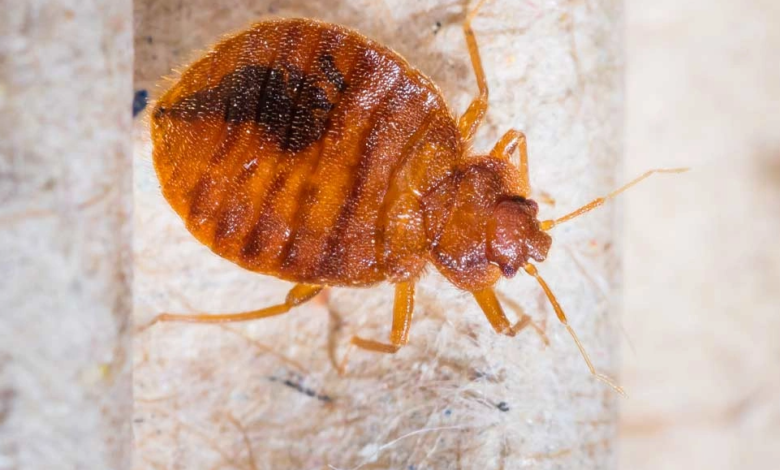How Fast Do Bed Bugs Spread? Learn the Shocking Truth

Bed bugs are among the most persistent and rapidly spreading household pests. While they don’t fly or jump, their ability to hitchhike on people and objects makes their spread alarmingly fast and incredibly difficult to detect at first. If you’ve ever wondered how fast bed bugs spread, the shocking truth is that a small problem can become a full-blown infestation in just a matter of weeks. Their reproductive cycle, resilience, and stealthy behavior make them a formidable enemy once they enter your living space.
A Single Female Can Start an Infestation: The Reproductive Power of Bed Bugs
The speed at which bed bugs multiply is largely due to their astonishing reproduction rate. A single female bed bug can lay up to five eggs per day and around 200 to 500 eggs in her lifetime. The eggs hatch within 6 to 10 days, and the newly emerged nymphs mature into adults in about five to six weeks if conditions are favorable—such as warm temperatures and access to blood meals from humans or animals.
What this means in practical terms is that even if just a couple of bed bugs make their way into your home, within two months you could be facing a population of hundreds or even thousands. This rapid reproduction is one of the key reasons why bed bug infestations often seem to appear overnight, even though they’ve likely been growing slowly and undetected for weeks
How Bed Bugs Travel: The Masters of Hitchhiking Without You Noticing
Bed bugs ( væggelus ) do not move fast on their own, crawling at a speed of about four feet per minute, but their method of transportation is what makes them so effective at spreading. They cling to luggage, clothes, used furniture, backpacks, and even shoes, making them ideal travelers. You might unknowingly bring bed bugs home from a hotel, a public transport seat, or even a friend’s house.
Once inside your home, bed bugs quickly spread from room to room. They typically start near sleeping areas—mattresses, box springs, bed frames—and then move to nearby furniture, baseboards, electrical outlets, and wall crevices. They are drawn to carbon dioxide and warmth, meaning their main targets are humans, particularly while they sleep.
See also: Personalized Bobblehead Dolls: Everything You Need to Know
Apartment Buildings and Shared Housing: A Bed Bug’s Paradise
One of the most dangerous environments for rapid bed bug spread is multi-unit housing, such as apartments, condos, or dormitories. In these structures, bed bugs can move through electrical wiring channels, wall voids, plumbing systems, and hallway cracks. This makes it possible for a small infestation in one unit to rapidly affect neighboring units, sometimes without the knowledge of tenants until it’s too late.
In apartment settings, even with regular pest control visits, failing to treat the entire building or identify the source unit can allow bed bugs to retreat and reinfest. This communal living setup is ideal for the spread of bed bugs, which is why these pests are particularly dreaded in cities and densely populated areas.
The Hidden Danger of Delayed Detection: Why Early Action is Crucial
Perhaps the most shocking truth about how fast bed bugs spread is that people often don’t realize they have a problem until it becomes severe. Bed bugs are small (about the size of an apple seed), hide during the day, and typically only feed at night. Their bites are painless at first, and reactions vary—some people experience itchy welts, while others show no signs at all.
This delay in identifying an infestation gives bed bugs ample time to spread within the home, lay eggs, and expand to adjacent areas. Once the signs become visible—blood stains on sheets, dark fecal spots, or shed skins—the infestation may already be advanced, requiring professional treatment to fully eradicate. And For more read https://vaeggelus-fri.dk/
Real Numbers: How Bed Bug Populations Grow Month by Month
To put their spread into perspective, consider the following example:
- Month 1: 2 bed bugs (1 male and 1 female)
- Month 2: The female lays about 100 eggs. 50 hatch and reach maturity.
- Month 3: 50 new adults begin laying eggs; population could now exceed 200.
- Month 4: Hundreds more eggs hatch; population now likely in the thousands.
This exponential growth shows how, in just a few months, a home can become overrun by bed bugs. It’s not an exaggeration—it’s simple biology.
What You Can Do: Stopping Bed Bugs Before They Spread Further
The most effective way to stop bed bugs from spreading is through early detection and immediate action. Here’s how to protect your home:
- Inspect mattresses, seams, and furniture regularly.
- Avoid bringing in used furniture without thorough inspection.
- Vacuum regularly and wash beddings in hot water.
- Seal cracks and gaps in walls, baseboards, and outlets.
- Call professional pest control at the first sign of bed bugs.
DIY methods may control small infestations temporarily, but they often miss hidden bugs or eggs. Professional extermination, often involving heat treatments or chemical applications, is typically required for thorough eradication.
Final Thoughts: Don’t Underestimate the Speed of Bed Bug Spread
So how fast do bed bugs spread? The shocking truth is—very fast. What begins as an unnoticed pair of bugs can escalate into a full-blown infestation in just a couple of months. Their stealthy travel methods, rapid reproduction, and resilience make them one of the most challenging pests to control.
The key to preventing the spread is vigilance, education, and swift action. Bed bugs aren’t a sign of poor hygiene or unclean homes—they can infest even the cleanest spaces. Knowing how quickly they multiply and move is the first step toward staying one step ahead of them.
